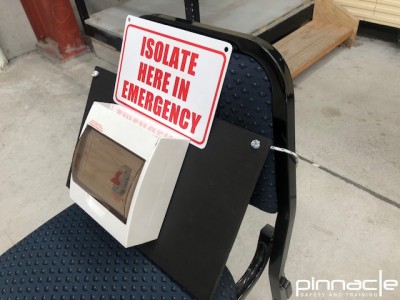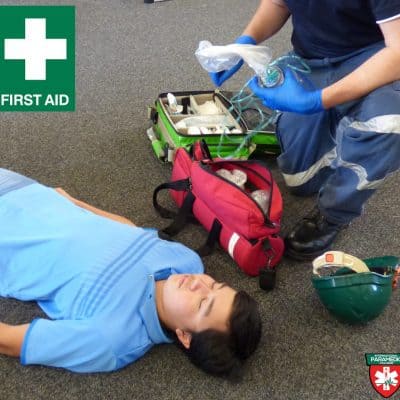In today's fast-paced office setting, making sure employee security is critical. One necessary element of this commitment is executing corporate first aid training programs. Such programs not just furnish employees with essential life-saving skills but likewise foster a culture of security and preparedness within companies. In this comprehensive overview, we'll delve into the essentials of corporate first aid training programs, addressing various components consisting of first aid courses, CPR training, mental health first aid, and more.

Understanding the Essentials of Corporate First Aid Training Programs
Corporate first aid training programs are created to prepare workers for emergencies that may occur in the work environment. These programs usually encompass a variety of skills, from fundamental emergency treatment techniques to innovative life assistance procedures. Carrying out such training within an organization can considerably lower the risk of injury and boost general office safety.

Why is First Aid Training Important in the Workplace?
First help training is important in any kind of work environment as it encourages staff members to act quickly and efficiently during emergency situations. Right here are some reasons why:
- Immediate Response: In an emergency situation, every second counts. Trained workers can supply instant support up until specialist aid arrives. Reduced Seriousness of Injuries: Quick intervention can considerably minimize the severity of injuries and improve outcomes. Confidence Building: Employees who undertake emergency treatment training feel more positive in their capacity to take care of dilemmas, leading to a much safer work environment. Legal Compliance: Numerous nations call for businesses to have actually trained personnel on-site to follow occupational health and safety regulations.
Components of Corporate First Aid Training Programs
1. Comprehensive First Aid Courses
Corporate first aid courses cover a large range of topics necessary for effective emergency situation feedback. These consist of:
- Basic first aid principles Treatment for cuts, swellings, burns, and fractures Managing choking incidents Recognizing signs of typical medical emergency situations like cardiovascular disease and strokes
2. Mouth-to-mouth resuscitation Training
Cardiopulmonary resuscitation (CPR) training is a crucial component of emergency treatment education and learning. This training teaches participants how to do chest compressions and rescue breaths to restore somebody that has quit breathing or whose heart has actually ceased beating.
3. Online Emergency Treatment Course Options
With technological developments, lots of companies currently offer on-line first aid courses that provide adaptability for workers to discover at their own speed. These courses commonly include interactive modules that engage students effectively.
4. Mental Health First Aid
Mental health and wellness emergency treatment is coming to be progressively important in company settings as recognition around mental health and wellness issues expands. This component trains people to recognize signs of mental distress amongst associates and offers approaches for offering assistance or support.
Benefits of Corporate First Aid Training Programs
Implementing corporate first aid training features countless advantages:

- Enhanced Worker Safety: A trained labor force substantially reduces workplace accidents. Boosted Morale: Employees feel valued when their employer invests in their safety. Improved Emergency Preparedness: Organizations end up being much more durable versus potential emergency situations due to trained workers prepared to respond.
How to Choose the Right Corporate Emergency Treatment Training Program?
Choosing the right program involves numerous factors to consider:
Certification Accreditation: Guarantee that the program offers identified certifications upon completion. Instructor Qualifications: Check if instructors are accredited professionals with real-life experience. Customization Options: Try to find programs that can be tailored to your particular workplace needs.Key Attributes of Effective Emergency Treatment Programs
An effective company emergency treatment program includes:
- Regularly set up refresher courses Hands-on technique sessions Scenario-based understanding opportunities Comprehensive evaluation methods
Integrating Guidebook Dealing with Training
Another critical facet related to business safety is manual handling training. This makes sure that staff members understand proper strategies for training and carrying items securely, decreasing strain and injury risks.
Specialized Courses for Various Work Environments
Different work environments may call for specialized programs relying on the nature of their operations:
1. Child Care First Aid Course
For those working in child care setups, specialized emergency treatment courses concentrate on pediatric care and special situations involving children.
2. Construction Site First Aid
Construction sites existing distinctive threats; therefore, customized training concentrating on trauma treatment related to construction injuries is vital.
Regulatory Needs for Workplace Emergency Treatment Training
Employers must adhere to neighborhood policies pertaining to workplace safety and security standards which usually determine minimum demands for first aid arrangement in various industries.
Creating a Culture of Safety With Constant Learning
Fostering recurring education and learning regarding safety and security protocols encourages a positive method among workers towards determining possible dangers before they cause serious incidents.
FAQs Concerning Corporate First Aid Training Programs
1. What should I search for in a high quality first aid course?
When looking for high quality courses, take into consideration accreditation standing, teacher experience, hands-on technique possibilities, and training course content relevant to your industry.
2. Just how usually need to staff members finish refresher courses?
It's typically advised that staff members total refresher courses every 2 years or faster if there are significant adjustments in procedures or regulations.
3. Are online emergency treatment courses as effective as in-person classes?
Online programs can be efficient if they include interactive elements; nonetheless, hands-on technique is crucial for abilities like mouth-to-mouth resuscitation which may need real-time comments from instructors.
4. Is mental health emergency treatment consisted of in standard emergency treatment training?
Typically no; mental health emergency treatment calls for different focused training because of its customized Click here for info nature attending to mental wellness as opposed to physical emergencies.
5. Can local business manage corporate first aid training?
Yes! Many carriers use budget-friendly plans customized specifically for small companies aiming to enhance worker safety and security without damaging the bank.
6. What happens if an employee provides incorrect therapy throughout an emergency?
While good Samaritan laws supply some defense versus legal repercussions when acting out of a good reputation during an emergency scenario, comprehensive training aids lessen blunders significantly.
Conclusion
In final thought, recognizing the fundamentals of corporate emergency treatment training programs outfits companies with devices essential not simply for compliance yet even more importantly-- employee welfare and performance enhancement through safer work environments. By investing time right into these important academic initiatives-- varying from CPR accreditation via online alternatives-- organizations not just safeguard themselves lawfully however likewise cultivate depend on among their labor force by empowering them with expertise that might save Onsite corporate first aid training lives throughout unpredicted circumstances.
Training doesn't just quit at first accreditation; it has to do with cultivating a culture where every worker feels ready and qualified-- making everybody more secure together!